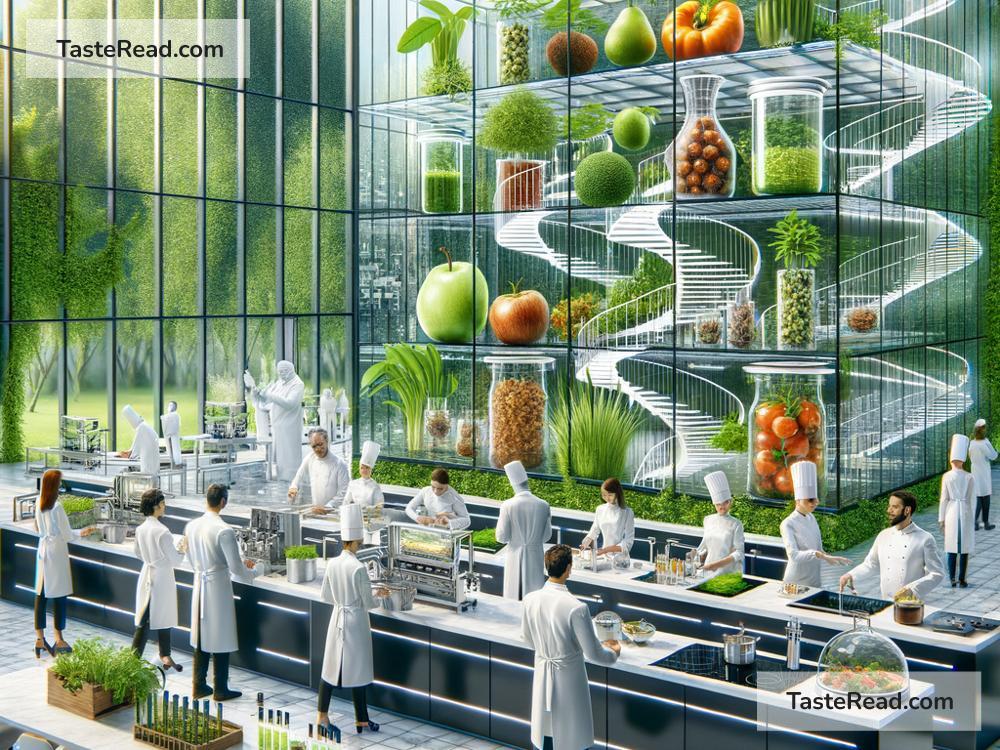The Future of Food Innovation Centers: How They’re Changing the Way We Eat
Food is something we all rely on, not just for survival but for enjoyment, health, and community. Over the years, how we grow, produce, and consume food has evolved. Today, food innovation centers are at the heart of this evolution, driving research, development, and collaboration to solve some of the biggest challenges in the food industry. These hubs of creativity and problem-solving are set to reshape the future of food as we know it.
What Are Food Innovation Centers?
Food innovation centers are specialized facilities designed to support the development of new food products, technologies, and processes. They bring together experts, resources, and technology to address issues like food sustainability, nutrition, waste reduction, and production efficiency. These centers often collaborate with businesses, universities, farmers, and startups to create breakthroughs in food science and manufacturing.
Imagine giant labs where food scientists experiment with eco-friendly packaging, chefs test plant-based recipes, and engineers build machines to reduce factory waste. These centers are like incubators for food ideas—places where concepts turn into real-world products that can change the way we eat and think about food.
Why Are They So Important?
The world is facing serious food-related challenges. Climate change is impacting crop yields, urbanization is reducing farmland, and the global population is growing rapidly. On top of that, many people are concerned about the environmental effects of food production, such as deforestation, water usage, and greenhouse gas emissions.
Food innovation centers aim to tackle these issues head-on. They are working to create solutions that produce more food, use fewer resources, and cause less harm to the planet. For example, some centers focus on creating alternatives to traditional meat, such as lab-grown meat or plant-based proteins. These innovations could reduce animal farming and its environmental impact while still providing people with high-quality protein options.
Additionally, food innovation centers focus on improving nutrition. Many people around the world suffer from malnutrition, either from lack of access to food or from eating poorly balanced diets. These centers are researching ways to make food healthier, more accessible, and better suited to different cultural and dietary needs.
What Will the Future Look Like?
The future of food innovation centers is exciting and packed with possibilities. Here are a few trends we might see in the coming years:
1. More Sustainable Food Production
Food innovation centers are already exploring ways to make farming greener and more efficient. Technologies like vertical farming and aquaponics allow crops to grow in controlled indoor environments with less space and water. Innovative solutions like biodegradable packaging and edible wrappers could reduce plastic waste in the food industry.
In the future, these centers will likely focus even more on sustainability, helping to fight climate change while feeding the world.
2. Expansion of Alternative Proteins
The demand for alternative proteins—like plant-based meat, insect-based foods, and lab-grown meat—is growing fast. Food innovation centers are working to make these alternatives tastier, cheaper, and more widely available. In the future, alternative proteins could become a regular part of our meals, reducing the need for traditional animal farming.
3. Personalized Nutrition
As science advances, food innovation centers could create products tailored to individual health needs. Imagine technology that analyzes your DNA or microbiome to suggest foods specifically suited to your body. This would help people eat healthier and prevent diet-related diseases.
4. Tech-Driven Food Solutions
Robots, AI, and blockchain are already entering the food industry, and innovation centers will push these technologies even further. For example, AI can help create recipes faster, predict food trends, and optimize farming methods. Blockchain could track food from farm to table, ensuring safety and transparency. Robots might handle tasks like harvesting, sorting, or cooking, improving efficiency in production.
5. Zero Waste Movement
Food waste is a massive global problem. Food innovation centers are working on solutions to repurpose wasted food into new products, like turning leftover vegetables into healthy snacks or using food scraps to create biofuels. In the future, waste-free food production might become a standard industry practice.
Collaboration Is Key
One big reason food innovation centers are so effective is their ability to bring people together. Governments, private companies, non-profits, scientists, and entrepreneurs all contribute their knowledge to create positive change. This collaboration will only grow stronger in the future, with global partnerships tackling food challenges on a larger scale.
These centers also increase access to cutting-edge tools and resources for small businesses and startups. Often, smaller companies don’t have the funding or equipment to experiment with new food technologies, but by teaming up with innovation centers, they can turn their ideas into reality.
The Impact on Everyday Life
As food innovation centers continue to develop new solutions, their influence will reach everyday people like you and me. We might find grocery stores filled with healthier, more affordable options, from lab-grown burgers to snacks made from upcycled ingredients. Restaurants could serve meals created with sustainable, locally grown foods. And food tech might allow us to cook smarter, reducing waste and expanding our recipe possibilities.
Conclusion
The future of food innovation centers is bright. By combining creativity, science, and technology, these centers will transform how food is made and consumed. They’ll help solve global problems, improve nutrition, and make food systems more sustainable. For those who are passionate about food and the planet, the advancement of food innovation centers feels like a hopeful step forward.
As these centers grow, we can expect them to play an even bigger role in the way we think about food. Together, they’ll contribute to a world where everyone can enjoy plentiful, nutritious, and environmentally friendly meals. That’s a future worth looking forward to!


